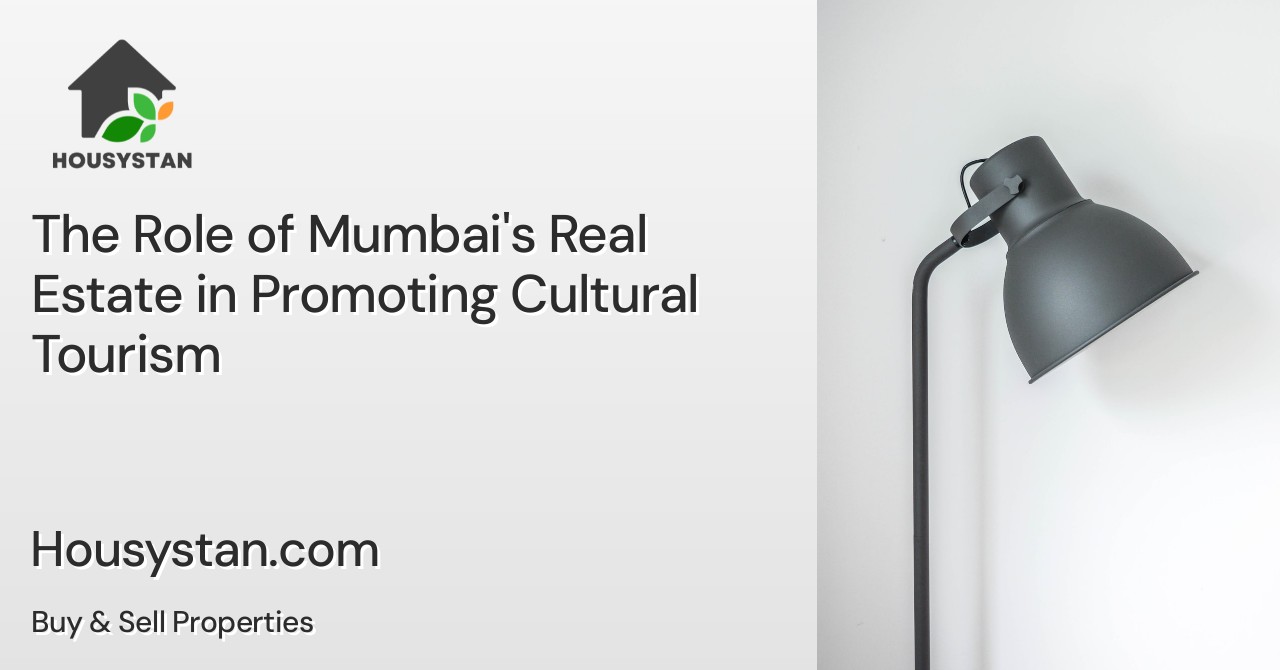The Role of Mumbai's Real Estate in Promoting Cultural Tourism
Read latest blogs and articles from Housystan

The Information mentioned here was last updated on:
2/12/2025Mumbai's Real Estate: A Catalyst for Cultural Tourism
Mumbai, often hailed as the city that never sleeps, is not just India's financial heart but also a melting pot of cultures. With a rich tapestry of history, art, and diversity, Mumbai’s real estate plays a significant role in promoting cultural tourism. From historic landmarks to modern infrastructure, the city's architecture provides a fascinating insight into its cultural evolution. This article explores how Mumbai's real estate influences cultural tourism, shedding light on key areas and attractions that lure tourists from across the globe.
-
- Verified Tenants/Buyers
- Unlimited Property Listing
- Zero subscription/charges fee
Table of Contents
1. The Intersection of Culture and Real Estate
2. Iconic Landmarks: Mumbai's Architectural Marvels
- a. Gateway of India
- b. Chhatrapati Shivaji Maharaj Terminus
- c. Elephanta Caves
3. Cultural Hubs: Breeding Grounds for Arts and Entertainment
- a. Kala Ghoda
- b. Bandra: A Blend of Old and New
- c. Theaters and Cultural Centers
4. Real Estate Development: Boosting Cultural Attractions
- a. Integrated Townships
- b. Heritage Conservation Initiatives
- c. Infrastructure Transformations
5. Staying in Style: Hotels and Accommodations
6. Enhancing the Visitor Experience: Future Prospects
-
1. The Intersection of Culture and Real Estate
Mumbai’s real estate reflects a shared history of colonial rule, local innovation, and contemporary urban development. This intersection between real estate and cultural tourism is evident in every corner of the city. With real estate developers increasingly focusing on preserving the past while embracing the future, cultural tourism flourishes, offering visitors a unique urban experience.
2. Iconic Landmarks: Mumbai's Architectural Marvels
Mumbai’s historic landmarks tell stories from different eras and attract cultural enthusiasts and architectural buffs alike.
- Gateway of India: Constructed in 1924, this majestic arch-monument welcomes tourists entering Mumbai by sea. It's not just a focal tourist site but also a testament to Indo-Saracenic architecture.
- Chhatrapati Shivaji Maharaj Terminus: A UNESCO World Heritage Site, this railway station is an architectural blend of Victorian Gothic Revival and traditional Indian style. Its vibrant history and bustling atmosphere make it a must-visit.
- Elephanta Caves: Located on Elephanta Island, these rock-cut caves dedicated to Lord Shiva offer insights into India’s ancient artistry. A ferry ride from the Gateway of India takes visitors to explore this spiritual and artistic venue.
3. Cultural Hubs: Breeding Grounds for Art and Entertainment
Mumbai's neighborhoods are cultural hotspots, each narrating its own story through art, music, and architecture.
- Kala Ghoda: Known for its annual arts festival, Kala Ghoda is Mumbai’s vibrant art district. Galleries, museums, and street art create an immersive experience for tourists exploring the city's artistic side.
- Bandra: A Blend of Old and New: Bandra captures both colonial charm and contemporary lifestyle. The iconic Bandra Fort and Mount Mary Basilica draw history buffs, while the area's vibrant street art and cafes lure younger crowds.
- Theaters and Cultural Centers: Landmark theaters and cultural centers like Prithvi Theatre and the National Centre for Performing Arts (NCPA) continually host art festivals, plays, and dance performances, enhancing the city’s cultural allure.
4. Real Estate Development: Boosting Cultural Attractions
Mumbai's real estate sector plays a pivotal role in enhancing the city's cultural offerings.
- Integrated Townships: Developments in real estate have been targeted towards creating integrated townships with facilities like theaters, museums, and art galleries, promoting cultural activities.
- Heritage Conservation Initiatives: Conservation projects ensure that historic sites are preserved and integrated into modern development plans, thus maintaining Mumbai's cultural heritage.
- Infrastructure Transformations: Enhanced public transport and infrastructure projects improve accessibility to cultural sites, making it easier for tourists to explore the city.
5. Staying in Style: Hotels and Accommodations
Mumbai’s burgeoning hospitality scene includes heritage hotels and modern accommodations, catering to a wide range of travelers.
- Historic hotels like the Taj Mahal Palace offer an opulent stay steeped in history, while contemporary chains provide modern comfort. These accommodations enhance the cultural tourism experience by offering locally inspired decor and traditional hospitality.
6. Enhancing the Visitor Experience: Future Prospects
As Mumbai continues to grow, the future of cultural tourism looks promising. Developments in digital tourism platforms, sustainable practices in real estate, and community-driven cultural narratives promise to provide deeper and more meaningful experiences for visitors.
Overall, Mumbai's real estate is a fundamental pillar in promoting and preserving the city's rich cultural tapestry. By continuing to invest in and develop spaces that celebrate the city’s heritage and diversity, Mumbai will not only attract more tourists but also foster a deeper appreciation of its cultural legacy. With every building and street corner telling a story, the city's evolving landscape remains an open book for all to explore.